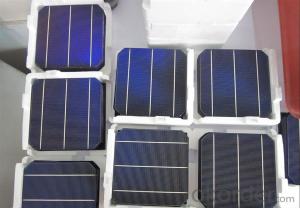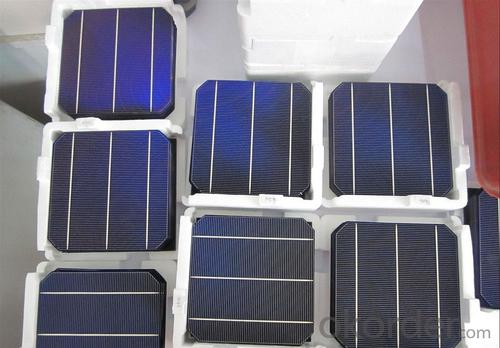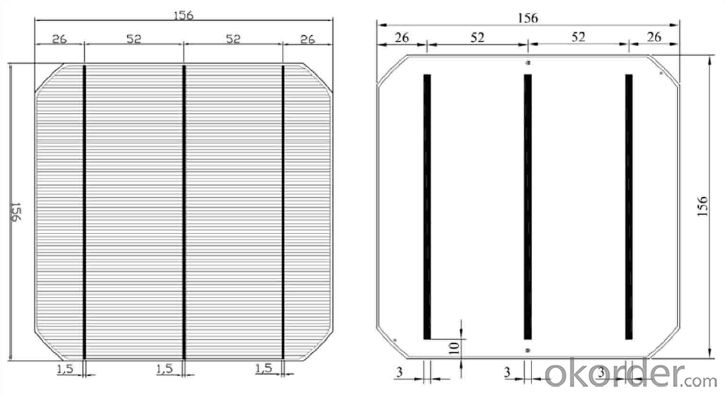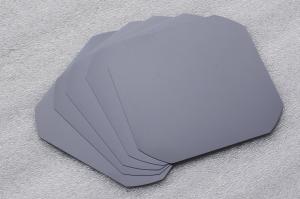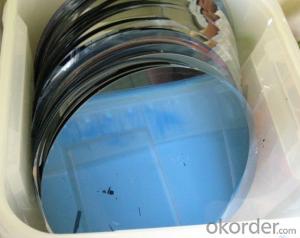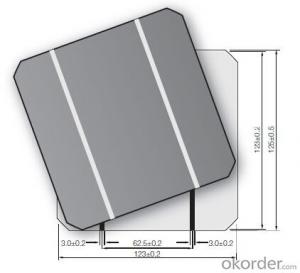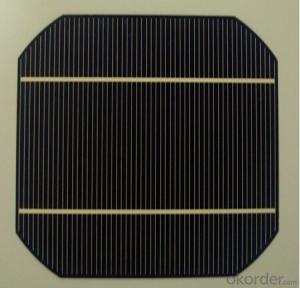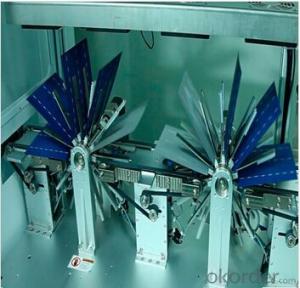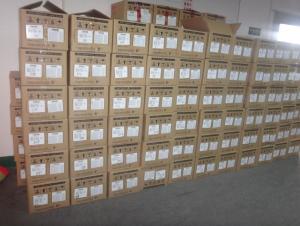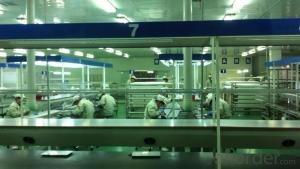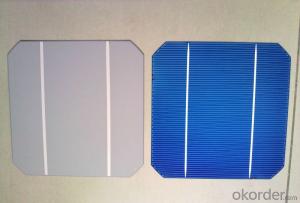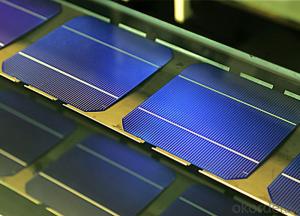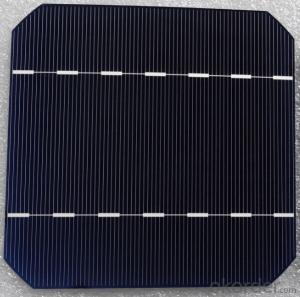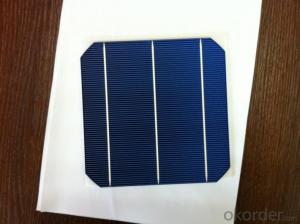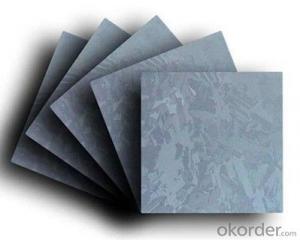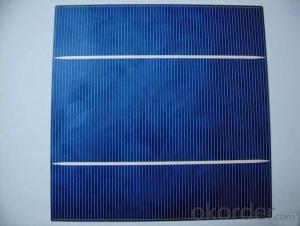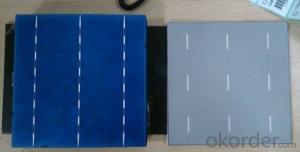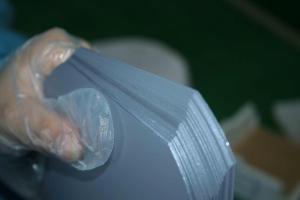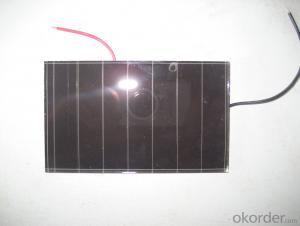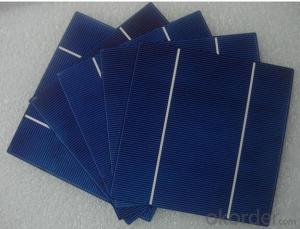Silicon Wafer To Solar Cell - Mono Solar Cells 156mm*156mm in Bulk Quantity Low Price Stock 18.6
- Loading Port:
- Shanghai
- Payment Terms:
- TT OR LC
- Min Order Qty:
- 1000 pc
- Supply Capability:
- 100000 pc/month
OKorder Service Pledge
OKorder Financial Service
You Might Also Like
Brief Introduction
- Up to 20.0% efficiency, one of the highest performing mono crystalline cells on the market
- Three bus bars boosts current collection over the entire cell area, leading to higher fill factors
- Blue anti-reflecting coating allows more sunlight be captured and converted to electricity
- Finer, closer fingers improves charge collections for improved energy yield
- Lower light-induced degradation leads to greater power output over the entire module lifetime
- All solar cells are tightly classified to optimize output of module
- Maximum yield and longevity due to hotspot prevention
- Premium appearance results in a highly uniform and aesthetically appealing module
Specification
- Product Mono-crystalline silicon solar cell
- Dimension 156 mm x 156 mm ± 0.5 mm
- Thickness 200 μm ± 30 μm
- Front 1.5 ± 0.1 mm busbar (silver)
- Silicon nitride antireflection coating
- Back 3.0 mm continuous soldering pads (silver)
- Back surface field (aluminum)
Electric performance parameters

- Testing conditions: 1000 W/m2, AM 1.5, 25 °C, Tolerance: Efficiency ± 0.2% abs., Pmpp ±1.5% rel.
- Imin : at 0.5 V
Light Intensity Dependence
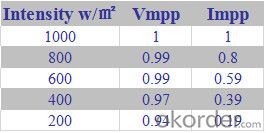
Soldering Ability
- Peel Strength: > 1.0 N/mm (Pull soldered ribbon from busbar in 5 mm/s of 180°)
Dimension Figure
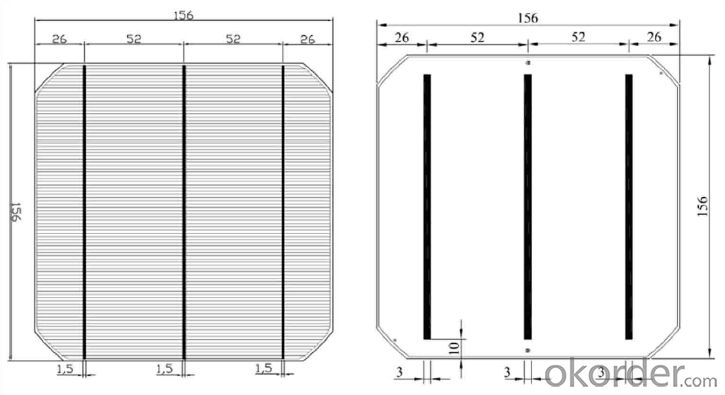
Quick Response
- Any time and anywhere, reply clients' email and solve all problems happen in the work at the first time.
- Remove clients doubts and offer the best solution at the first time.
- Give our clients the lastest news of the photovoltaic, update the newest stock informtion.
Production and Quality Control
- Precision cell efficiency sorting procedures
- Stringent criteria for color uniformity and appearance
- Reverse current and shunt resistance screening
- ISO9001,ISO14001 and OHSAS 18001,TUV Certificated
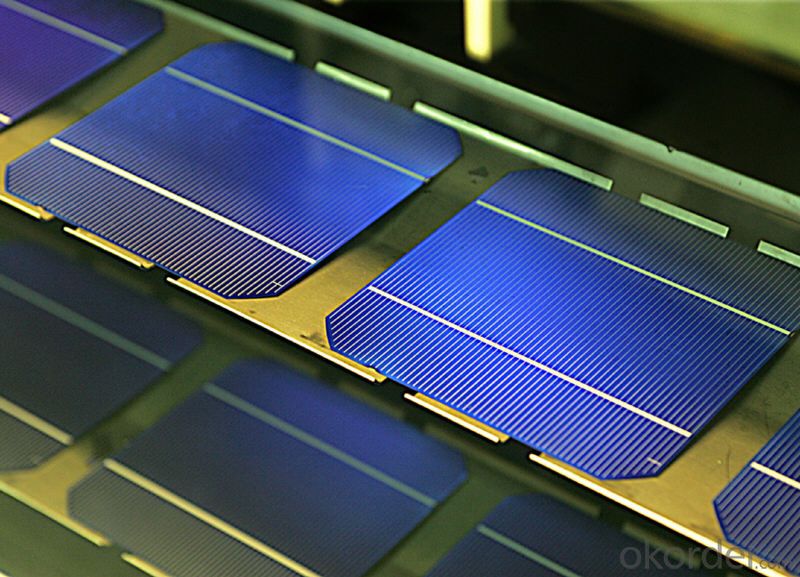
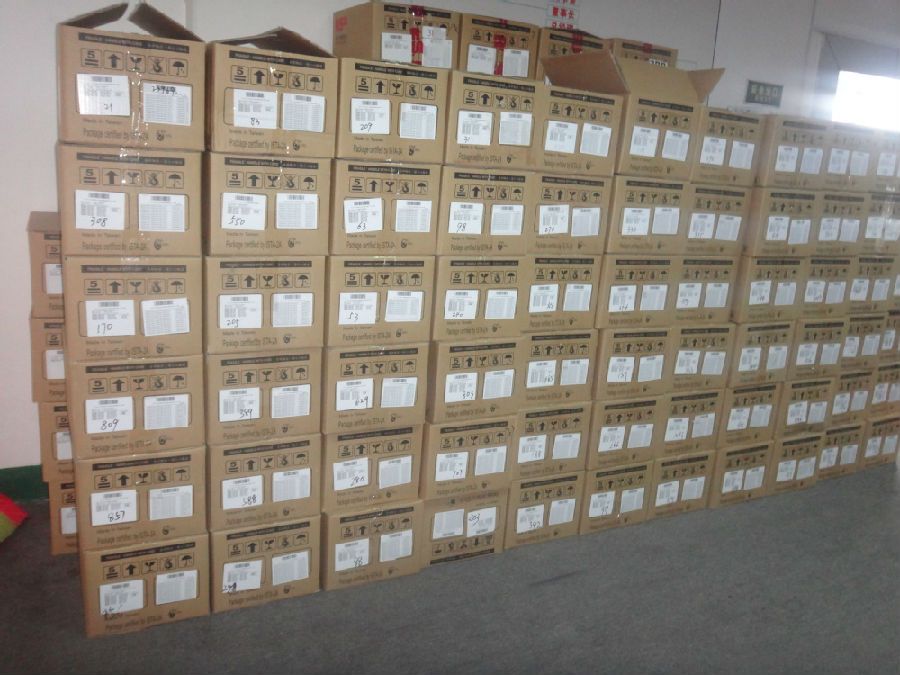
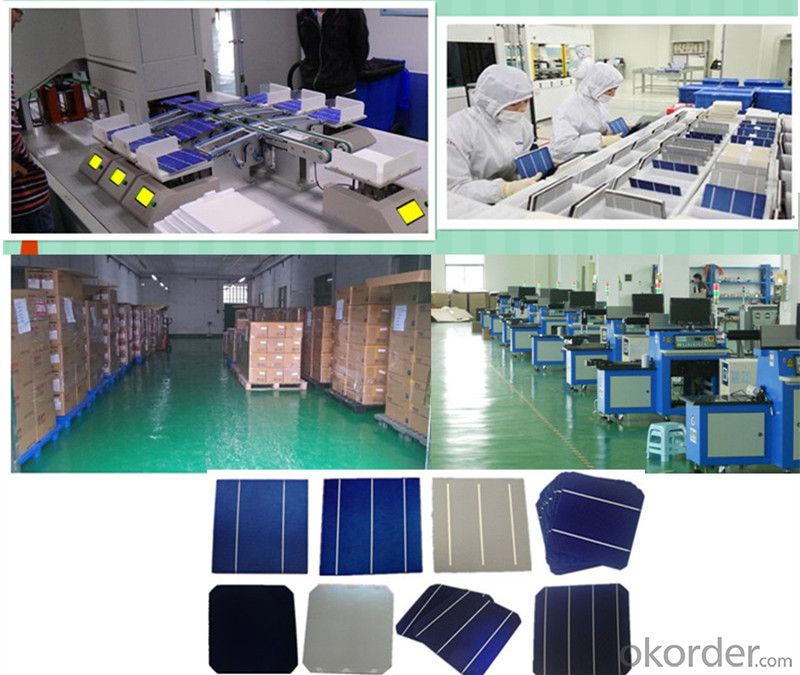
FAQ:
1. Q: Do you have your own factory?
A: Yes, we have. Our factory located in Jiangsu
2. Q: How can I visit your factory?
A: Before you visit,please contact us.We will show you the route or arrange a car to pick you up.
3. Q: Do you provide free sample?
A: Commenly we provide paid sample.
4. Q: Could you print our company LOGO on the nameplate and package?
A: Yes, we accept it.And need an Authorization Letter from you.
5. Q: Do you accept custom design on size?
A: Yes, if the size is reasonable.
6. Q: How can I be your agent in my country?
A: Please leave feedback. It's better for us to talk about details by email.
7. Q: Do you have solar project engineer who can guide me to install system?
A: Yes, we have a professional engineer team. They can teach you how to install a solar system.
- Q: What is the impact of crystal orientation on solar silicon wafers?
- The crystal orientation of silicon wafers used in solar cells has a significant impact on their efficiency and performance. The orientation determines how well the wafer can absorb and convert sunlight into electricity. Silicon wafers with specific crystal orientations, such as (100), (110), or (111), exhibit different electrical and optical properties. For instance, (100) oriented wafers have higher carrier mobility, which enhances charge transport and reduces recombination, resulting in improved efficiency. On the other hand, (111) oriented wafers have a lower defect density and higher surface passivation qualities, leading to better light trapping and higher open-circuit voltages. Therefore, the crystal orientation of solar silicon wafers plays a crucial role in determining their overall performance and efficiency in converting sunlight into usable electricity.
- Q: What are the different types of glass covers used on solar silicon wafers?
- The different types of glass covers used on solar silicon wafers include tempered glass, anti-reflective coated glass, textured glass, and transparent conductive oxide coated glass.
- Q: Are solar silicon wafers affected by chemical exposure?
- Yes, solar silicon wafers can be affected by chemical exposure. Certain chemicals, such as strong acids or alkalis, can corrode or etch the surface of the silicon wafers, leading to a decrease in their efficiency and overall performance. It is important to handle and store solar silicon wafers properly to prevent any chemical damage.
- Q: What is the size of a typical solar silicon wafer?
- A typical solar silicon wafer is typically around 156mm (6.14 inches) in size.
- Q: P type and N type monocrystalline silicon chip difference?
- The doping of phosphorus in monocrystalline silicon is N type, the more the phosphorus is, the more free electrons, the stronger the conductivity, the lower the resistivity;
- Q: Can solar silicon wafers be customized for specific applications?
- Yes, solar silicon wafers can be customized for specific applications. The specifications of the wafers can be tailored to meet the requirements of various solar energy systems and applications, such as residential, commercial, or industrial. Customization can include adjustments in size, thickness, doping, and surface properties to optimize performance and efficiency for specific use cases.
- Q: Can solar silicon wafers be used in agricultural applications?
- Yes, solar silicon wafers can be used in agricultural applications. They can be utilized in solar-powered irrigation systems, water pumps, and other agricultural machinery to provide renewable energy and reduce reliance on fossil fuels. Additionally, solar panels made from silicon wafers can be installed on rooftops or open fields to generate electricity for agricultural operations, such as powering farm equipment and lighting.
- Q: What is the role of metal contacts on solar silicon wafers?
- The role of metal contacts on solar silicon wafers is to provide electrical connections between the solar cells and external devices, such as wires or other components in the solar panel system. These contacts help to efficiently extract the generated electricity from the solar cells and transfer it to the desired output.
- Q: What is the impact of impurities on the performance of solar silicon wafers?
- Impurities in solar silicon wafers can have a significant impact on their performance. These impurities, such as metal contaminants or non-crystalline structures, can reduce the efficiency of the solar cell by affecting the flow of electrons and their ability to generate electricity. They can also introduce recombination centers, which can lead to a higher rate of electron-hole recombination and decrease the overall power output of the solar panel. Therefore, minimizing impurities and maintaining high purity levels in silicon wafers is crucial for maximizing the performance and efficiency of solar cells.
- Q: Can solar silicon wafers be used in space exploration missions?
- Yes, solar silicon wafers can be used in space exploration missions.
Send your message to us
Silicon Wafer To Solar Cell - Mono Solar Cells 156mm*156mm in Bulk Quantity Low Price Stock 18.6
- Loading Port:
- Shanghai
- Payment Terms:
- TT OR LC
- Min Order Qty:
- 1000 pc
- Supply Capability:
- 100000 pc/month
OKorder Service Pledge
OKorder Financial Service
Similar products
Hot products
Hot Searches
Related keywords
